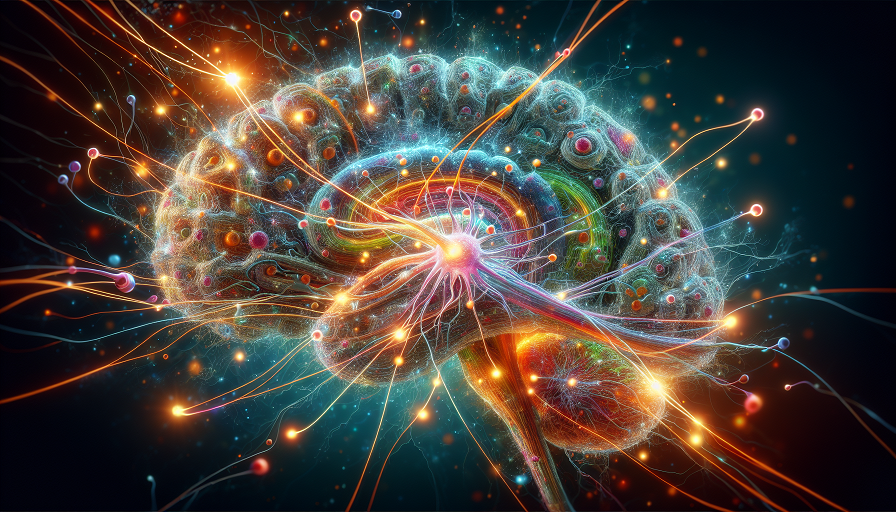
This is the story of how Mia, a struggling artist, rediscovered her creative spark and took her art to new heights with the help of nootropics.
Contents
The Creative Block
For as long as I can remember, art was my escape. Whether it was painting, sketching, or sculpting, I thrived on transforming ideas into something tangible. But over the past year, my creativity had all but vanished.
It started subtly—a few uninspired sketches here, a half-finished canvas there. But soon, even sitting down at my workspace felt like a chore. I’d stare at a blank page for hours, my mind refusing to spark. Deadlines for commissioned work loomed, but I was stuck, paralyzed by a mix of self-doubt and exhaustion.
“What’s wrong with me?” I wondered aloud one afternoon, wiping smudges of paint from my hands. My partner, Alex, gently suggested I might be burnt out. They weren’t wrong. But how was I supposed to fix it?
The Search for Inspiration
One night, after another frustrating day, I found myself scrolling through an online art forum. Amid posts about technique and materials, a thread caught my eye: “Enhance Creativity with Nootropics.” Curious, I clicked.
The users were raving about nootropics—supplements designed to support brain function. “It’s like a mental clarity reset,” one artist wrote. “Helps me get into the zone without forcing it.” Another mentioned improved focus and reduced mental fatigue, things I desperately needed.
I wasn’t convinced at first. Could a supplement really help me find my creative flow again? But the more I researched, the more intrigued I became. The science behind ingredients like Lion’s Mane, Rhodiola, and L-Theanine was solid, and the reviews were promising. I decided to give it a try.
The First Brushstroke
A week later, the package arrived. I started taking one capsule each morning with my tea, not expecting much at first. For the first few days, I didn’t notice any dramatic changes, but by the end of the week, something shifted.
It was a Saturday morning when I sat down in my studio, determined to break through the block. As I prepped my paints, an idea popped into my head—a vivid image of a stormy seascape, full of movement and emotion. Without overthinking, I grabbed my brushes and started painting.
For the next three hours, I was completely immersed. Colors blended effortlessly, shapes emerged naturally, and for the first time in months, I felt connected to my work. When I stepped back, I was stunned. The piece wasn’t perfect, but it was alive. It was me.
Finding the Flow
Over the following weeks, I noticed a significant difference in my process. The fog that had clouded my thoughts began to lift, and I found myself looking forward to my time in the studio. Ideas flowed more freely, and I felt less pressure to force perfection. Even mundane tasks, like organizing supplies or responding to client emails, became easier.
The nootropics didn’t just help me focus—they also gave me the energy to see projects through. I started experimenting with new techniques, diving into styles I’d always admired but never attempted. With each completed piece, my confidence grew.
It wasn’t just my art that improved. My mood lifted, and I felt more present in my day-to-day life. I started sketching in coffee shops again, something I hadn’t done in years. Alex noticed the change, too: “You seem happier,” they said one evening. “Like you’ve got your spark back.”
Unlocking Creative Genius
One breakthrough moment came during a high-profile commission. A local gallery had asked me to create a centerpiece for their upcoming exhibition—a daunting task, to say the least. Normally, I would have procrastinated, second-guessed myself, and panicked as the deadline approached. But this time, I approached it differently.
I broke the project into manageable steps, using my newfound focus to tackle each one with care. Instead of overthinking every decision, I trusted my instincts. The final piece—a sprawling abstract landscape—received rave reviews at the exhibition. One visitor even bought it on the spot.
Standing in the gallery that night, I realized how far I’d come. I wasn’t just creating again—I was thriving.
What I Learned
Here are the key lessons I’ve taken from my journey:
- Creativity ebbs and flows. It’s normal to go through dry spells, but you don’t have to stay stuck.
- Support your brain. Nootropics gave me the clarity and focus I needed to reconnect with my art.
- Small changes matter. Pairing nootropics with healthier habits—like better sleep and regular breaks—made a big difference.
- Trust the process. Letting go of perfectionism allowed me to take creative risks and grow as an artist.
Moving Forward
Today, my studio is my sanctuary once again. I still take nootropics as part of my morning routine, and they continue to support my focus and creativity. But more importantly, I’ve learned to nurture my artistic spirit. Whether it’s through experimenting with new techniques, stepping away when I need a break, or simply trusting myself, I know how to keep the creative fire alive.
If you’re an artist struggling to find your edge, don’t lose hope. Sometimes, all it takes is a fresh perspective—and a little support—to unlock your full potential.

